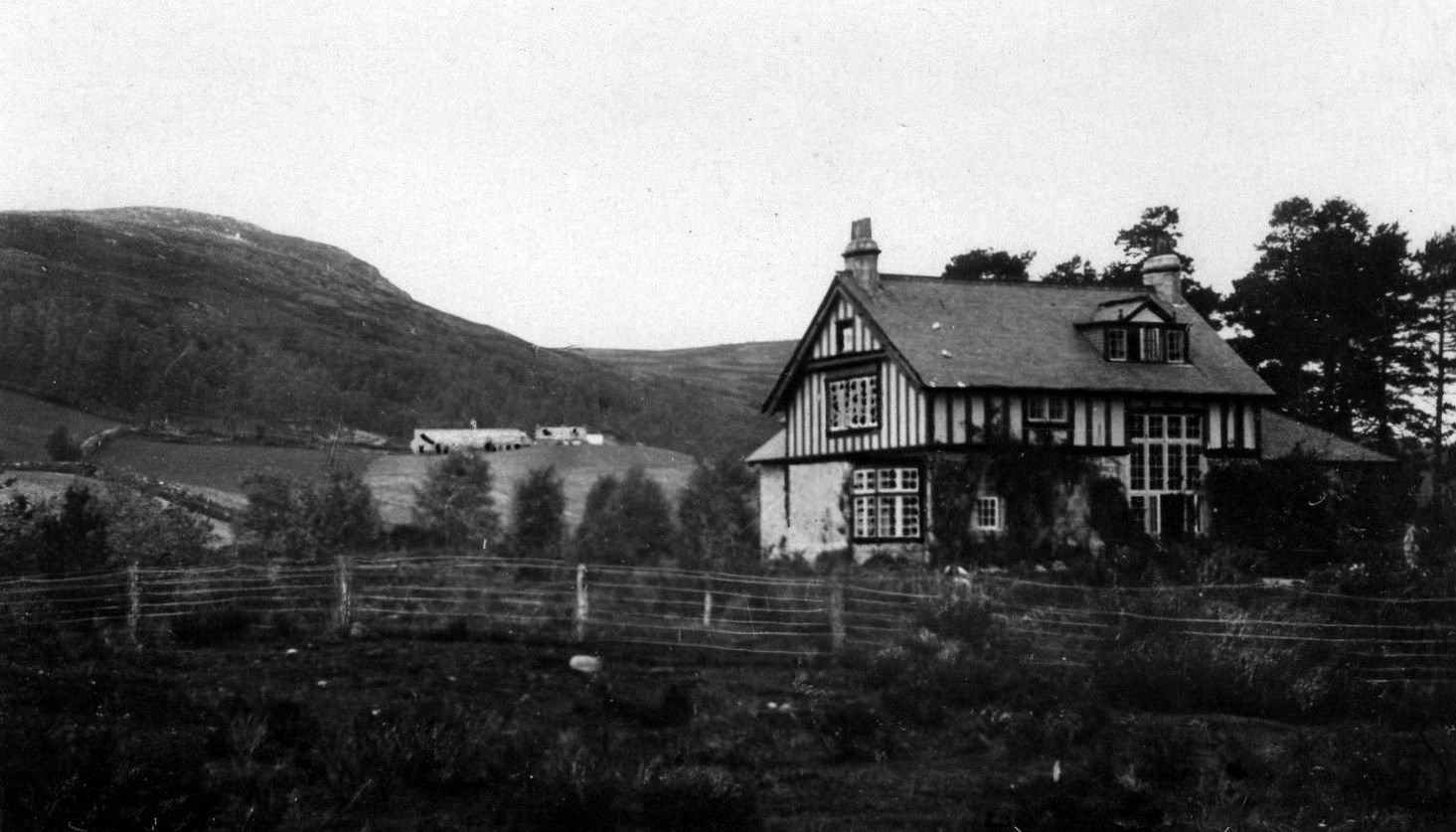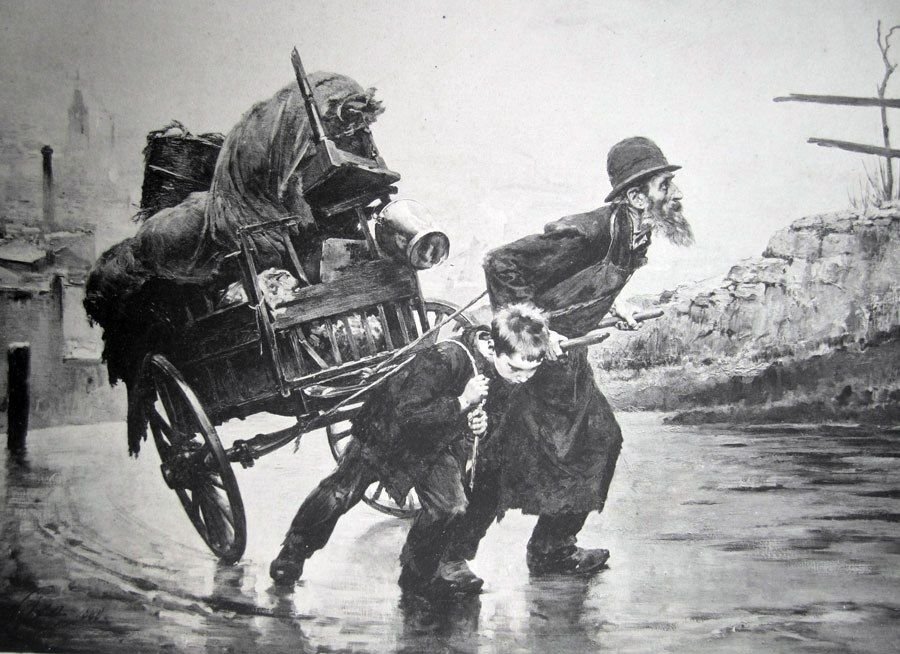Rodolphe Christen (1859-1906)
Old Man, Charcoal on Paper
Signed, Inscribed and Dated (Verso):
Rodolphe Christen, Paris, 1900
Though this powerful study has the finished character of a self-portrait, it is more likely a depiction of the artist's brother, Emile, or perhaps a close friend from the artist’s time in Paris.
In 1900 Christen married the Irish artist and geologist Sydney Mary Thompson (1847-1923). In contrast to the impoverished bohemian that he resembled for much of his life, his married years were spent blissfully decorating St Imier, their newly built Swiss chalet in the Scottish village of Ballater.
Later Years
His wife’s memoirs describe a career oscillating between momentary successes and longer periods coalescing – heart attacks, lingering colds, most of them stemming from Christen’s lifelong habit of smoking cigars. Overwork between 1893 and 1896, a rare period where he felt comfortable enough to propose to an American artist studying in Paris, seems to have undone much of his artistic momentum, as well as his physical health, his mental state, and inevitably his engagement in 1896.
This unhappy spell serves as something of a precursor to Christen’s eventual death in 1906. The writer Amy Stewart-Fraser recalls how he “severely injured his tongue by putting the glowing end of his cigar in his mouth while absorbed in painting”, spending his remaining months between agonising infections and diminishing speech.
In response to his premature death, Christen’s wife published a biography of his life and work in 1910. A review in the Burlington Magazine, felt “that the very last person to… give to the world at large the picture of a man of genius should be his nearest relative or dearest friend…”
Nevertheless, from an art historical perspective, Thompson’s book records many useful details about her husband’s life, including many of his drawings. Though largely unknown and now sadly untraced, they reveal him to have been a fine draughtsman, able to capture a scene in a few rapid lines, or in the case of a life study like this one, in deliberate, painstaking detail.
It is unfortunate that Christen lived for just 47 years, most of them impoverished. It is doubly unfortunate that many of the paintings he did produce were consumed in a loft fire after his death. Likely included were the landscapes he painted with Jean Francis Auburtin (1866-1930), who visited him in Scotland in 1905, a year before his death. His wife describes how the pair "walked amazing distances, laden with heavy sketching materials.” Perhaps it was Scotland, possibly even Christen that accelerated Auburtin’s movement away from the academic symbolism of Puvis de Chavannes to a lighter palate and an impressionistic taste for the open air.
Early YEars
Rodolphe christen (1859-1906) was born in Switzerland to a multilingual household. His early letters, drift easily between French and German.
Like most talented young Swiss artists before 1903, he found himself in a land with no official school devoted to the Fine Arts and was therefore absorbed by Industry. His apprenticeship to the watch-engraver Charles Boillot coincided with the Long Depression, an economic slump which saw Boillot emigrate to the USA.
Christen remained in Switzerland, and through a friend, met Madame de Pierre, a well-travelled woman who had lived at the Prussian Court. She was a profound influence on his early years, offering, at first, to pay for his education as a pastor, but later making arrangements for hm to study law. She gave him access to a large library and liberating him from a “miserable windowless loft” in Neuchatel, offered him an outhouse on her estate, with a picturesque garden overlooking the alps.
Deciding that he was unsuited to a legal career, he came very close to accepting an offer from his brother Arnold, then at Odessa, to accompany a prominent Russian family on their tour of the Caucasus and the Black Sea. He decided against the idea and left for Nancy, where he worked with his brother Emile as a milliner.
He arrived in Paris in June 1879 just months before Victor Hugo opined that the twentieth century would be without “war”, “dogma” and “hatred.” He settled in Montparnasse, near to Cézanne, Bouguereau, and a myriad of nameless veterans of the Franco-Prussian War.
During this time, he attended the Académie Julian in the morning and worked for the printmaker Paul Dujardin (1843-1913) in the evening. By 1888 he was living in a studio off the Boulevard Raspail, and working at the Académie Delécluse. He recalls seeing the “beautiful canvases” of Jules Joseph Lefevbre on display, as well as Carolus Duran’s recently finished portrait of François-Louis Français (1814-1897). He was also profoundly affected by “Le Collier de Misere”, Jean Geoffroy’s (1853-1924) powerful study of a rag-trader and young boy pulling an overladen cart.
As well as painting he maintained a keen interest in literature, and admired the poetry of Verlaine, the “erratic genius” who he remembers seeing in his later years, dancing at Bal Bullier.
A few years later he left France for Britain and Paris for Aberdeen, where he taught drawing and painting in Berthe des Clayes’ School.
“St. Imier”, Ballater (Now McEwan Gallery) - Built in 1902
"In Loving memory of Rodolphe Christen, artist, son of Melchior Christen. Born at St Imier, Canton Berne, Switzerland, on the 26th April 1859. Died at St. Imier, Brig o'Gairn, Ballater, on the 7th of Semptember 1906.
Unknown Landscape - Jean Francis Auburtin (1866-1930) Oil on Canvas
Private Collection
Le Collier de misère - Jean Geoffroy (After)




